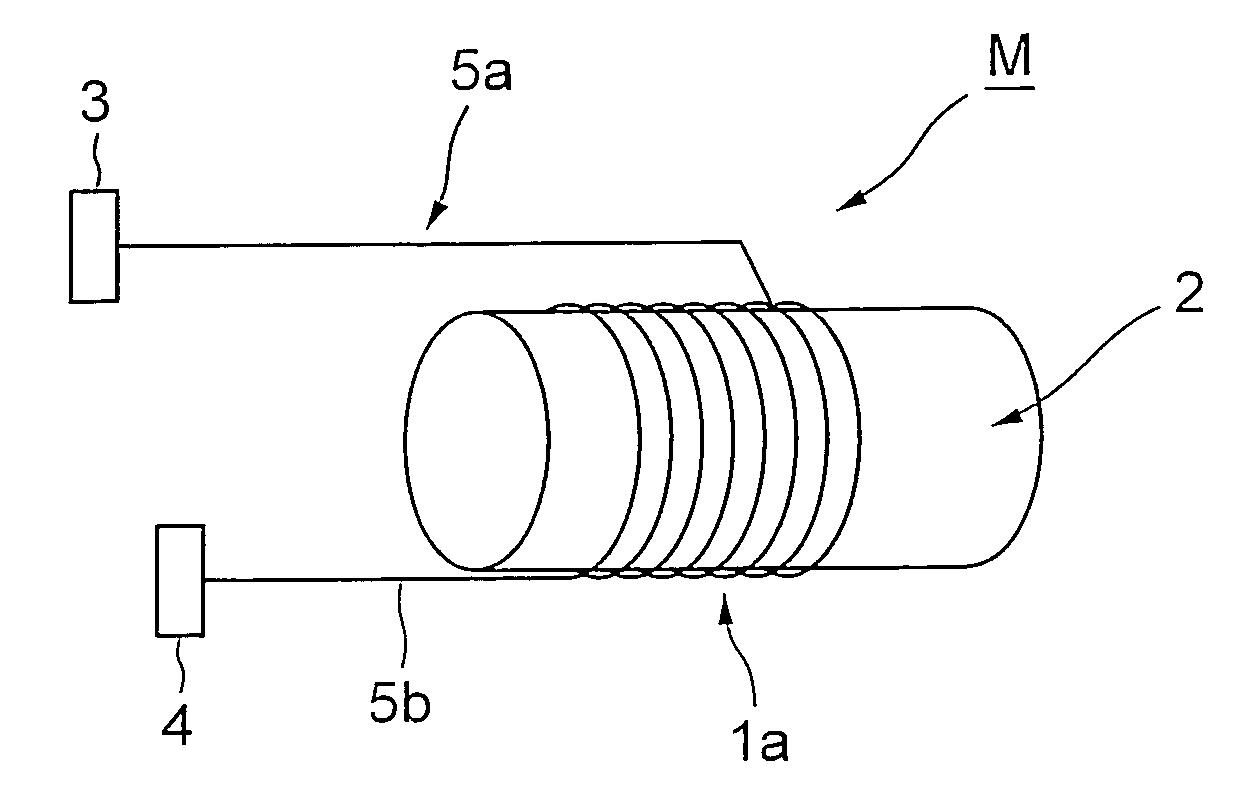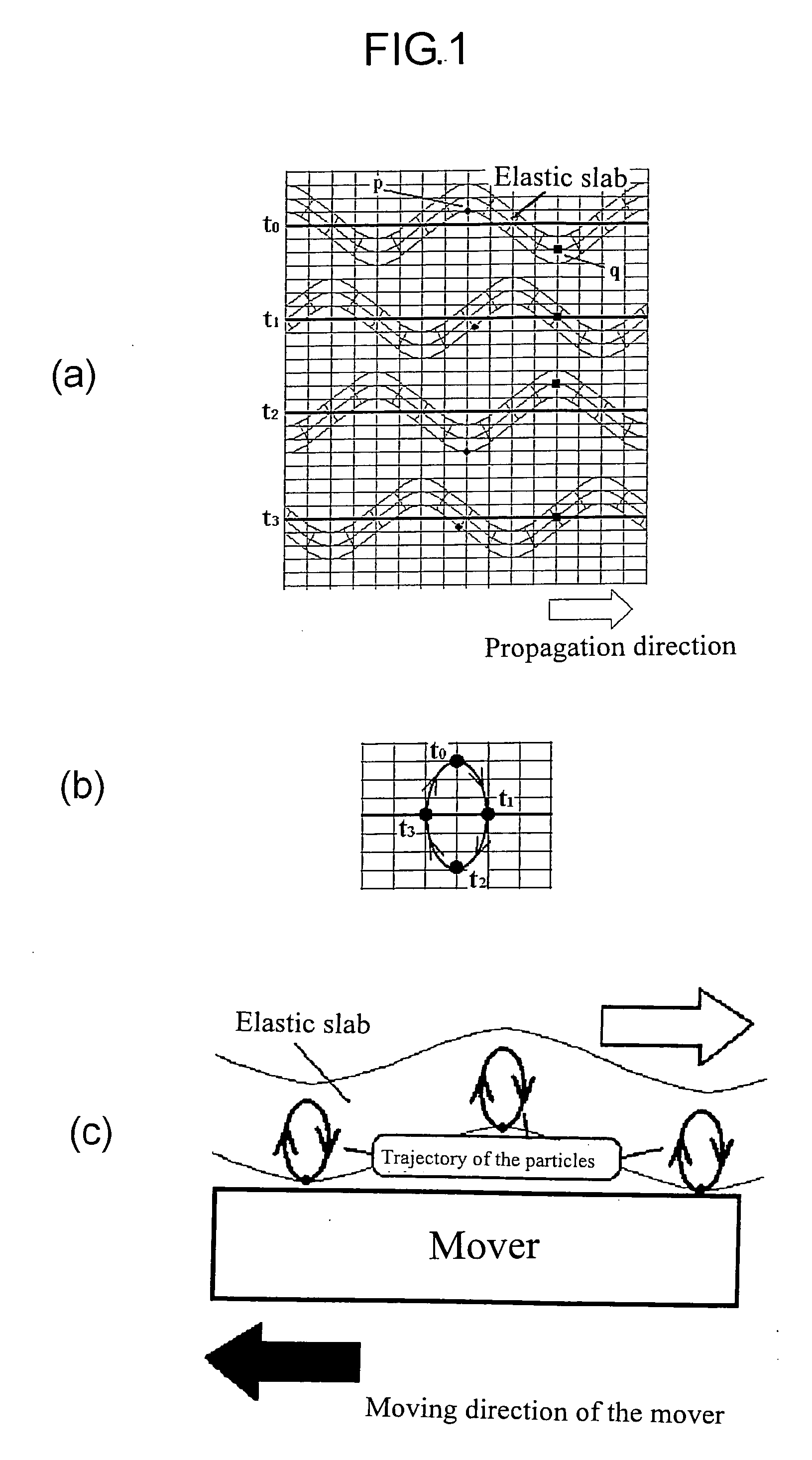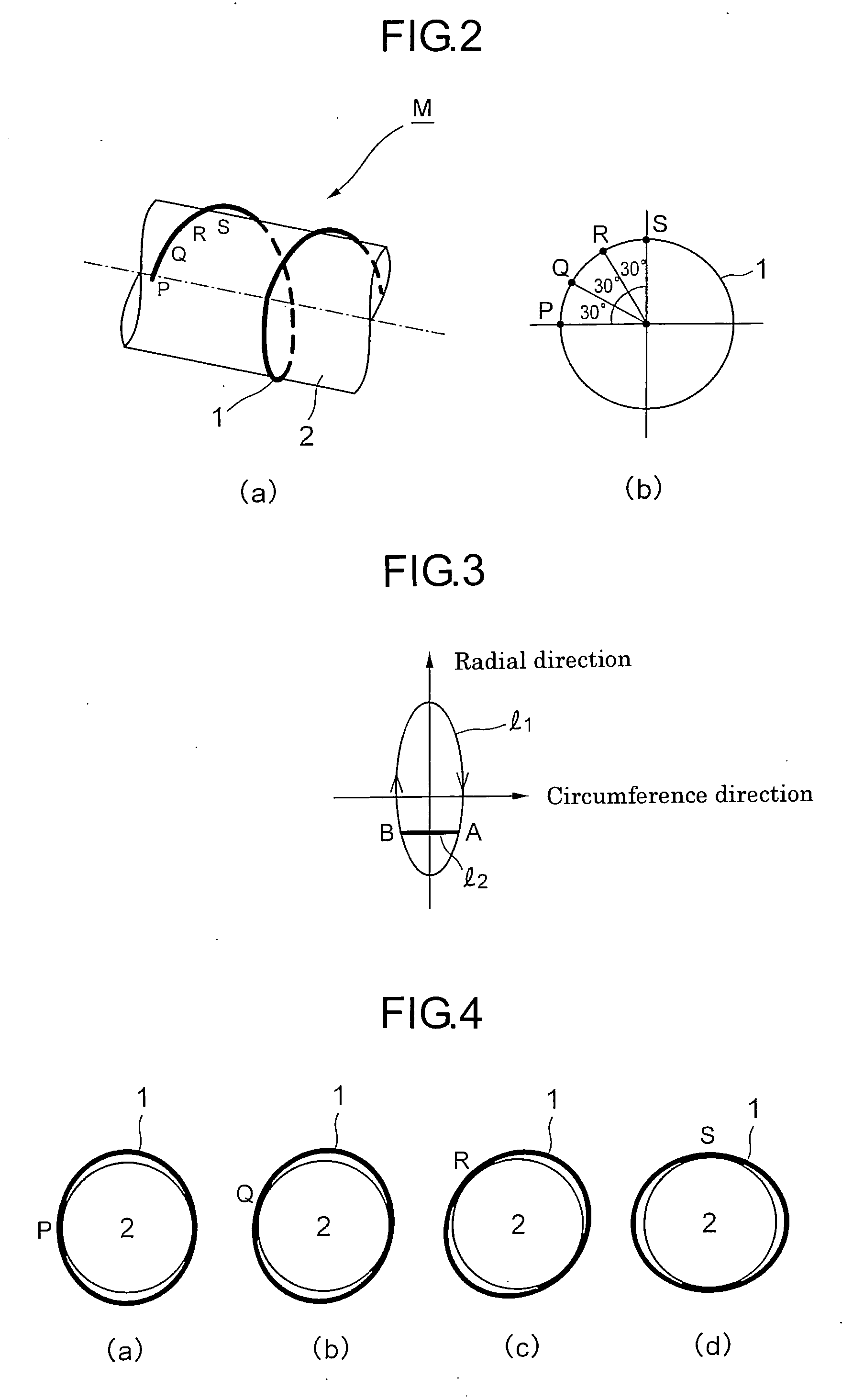Ultrasonic Motor
a technology of ultrasonic motors and cylinders, applied in piezoelectric/electrostrictive/magnetostrictive devices, piezoelectric/electrostriction/magnetostriction machines, electrical equipment, etc., can solve the problems of unneeded preload springs and inability to work in liquid environments
- Summary
- Abstract
- Description
- Claims
- Application Information
AI Technical Summary
Benefits of technology
Problems solved by technology
Method used
Image
Examples
example 1
[0060]FIG. 5 shows the principle of example 1 of the invented traveling wave type ultrasonic motor that uses a coiled waveguide as a stator. The motor consists of transducers 3 and 4, waveguides 5a and 5b, a rotor 2, and a coiled acoustic waveguide 1a wound around the rotor 2.
[0061] When an electric voltage is applied to the transducer 3, the flexural wave is excited, and is propagated along the waveguide 5a to the coiled acoustic waveguide 1a. The propagation of the flexural wave along the coiled acoustic waveguide causes an elliptical orbit of the point on the contact surface of the waveguide. The elliptical motion of the points causes the rotor to rotate in the direction opposite to that of the propagation of the flexural wave via the frictional force between the coiled acoustic waveguide and the rotor. Here every point on the waveguide in the contact region causes a driving force in the same direction. The flexural wave is attenuated as it propagates along the coiled waveguide....
example 2
[0067] An example of the invented motor is shown in FIG. 7. The motor M consists of paired waveguides 5a and 5b, a rotor 2, a stator la placed inside the rotor 2, transducers 3 and 4. In this example, an electric voltage is applied to the transducer 3, and the flexural wave propagates along the waveguide 5a to the stator 1a. The elliptical movement of the surface element of the stator 1a causes the rotor to rotate as described in Example 1. FIG. 8 shows the enlarged arrangement of the stator 1a and the rotor 2.
[0068] The stator 1 can also be placed outside the rotor 2 as shown in FIG. 9.
[0069] The rotation speed and the torque of the motor depend on the diameters of the acoustic waveguide and the rotor, the amplitude of the flexural wave, and the duration of the pulse if the flexural wave is pulse modulated. Furthermore, a groove on the surface of the rotor modifies the torque and the rotation speed.
[0070] A motor based on the FIG. 8 was constructed. In this case, only one wavegu...
example 3
[0072]FIG. 10(a) is a diagram describing how an axial symmetric body such as a sphere can be rotated by using a coiled waveguide wound around in close external contact with the sphere as shown. FIG. 10(b) is a diagram showing that a hollow tube 2 placed in close internal contact with the coil 1 can be moved linearly along the axis of the coil.
PUM
 Login to View More
Login to View More Abstract
Description
Claims
Application Information
 Login to View More
Login to View More - R&D
- Intellectual Property
- Life Sciences
- Materials
- Tech Scout
- Unparalleled Data Quality
- Higher Quality Content
- 60% Fewer Hallucinations
Browse by: Latest US Patents, China's latest patents, Technical Efficacy Thesaurus, Application Domain, Technology Topic, Popular Technical Reports.
© 2025 PatSnap. All rights reserved.Legal|Privacy policy|Modern Slavery Act Transparency Statement|Sitemap|About US| Contact US: help@patsnap.com



